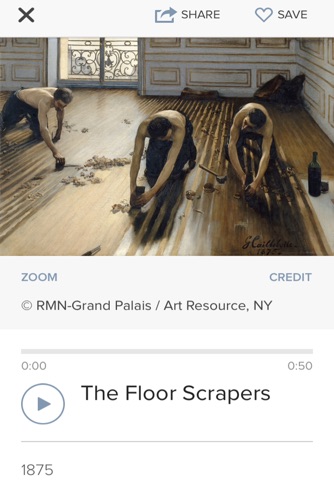
NGA - Gustave Caillebotte
From the moment Gustave Caillebotte (1848-1894) debuted with the impressionists in 1876, he established himself as an artistic force. He rejected the romantic ideals and heroic myths prized by the Academy, turning his eye instead to the streets of Paris and quiet, ordinary scenes inside the homes of his family and friends. With skewed perspectives and modern subjects, Caillebottes canvases reflect the visual drama of the capital -- a city brimming with energy but tinged with loneliness.
This App accompanies the National Gallery of Arts 2015 exhibition Gustave Caillebotte: The Painters Eye, coorganized with the Kimbell Art Museum. The exhibition presents a selection of Caillebottes strongest paintings, focusing on the period from 1875 to the mid-1880s when he was most closely allied with the impressionists. In addition to his iconic cityscapes and interiors, the show includes examples of the artists portraits, nudes, river scenes, still lifes, and landscapes. Together the works demonstrate the important role Caillebotte played in the development of modern painting. The App, narrated by National Gallery of Art director Earl A. Powell III, features commentary by exhibition co-curators Mary Morton, National Gallery of Art, and George Shackelford, Kimbell Art Museum.



